New Footscray Hospital Project newsletter #5 | December 2022
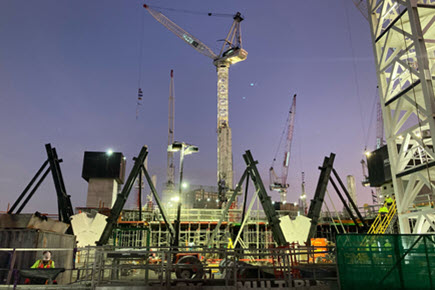
A total of eight v-columns were installed across the site. Spanning over 13 metres high and weighing more than 90 tonnes, each column is designed to support a load of nearly 6,000 tonnes.
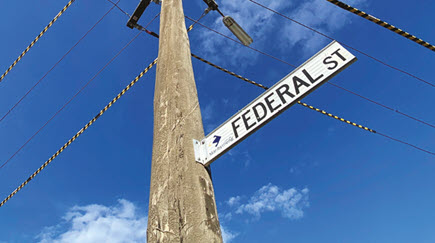
Authorities are continuing works within the site and on neighbouring streets to upgrade the surrounding utilities for the new hospital.

The final concrete pour on level four of the Federal Street carpark is now complete.
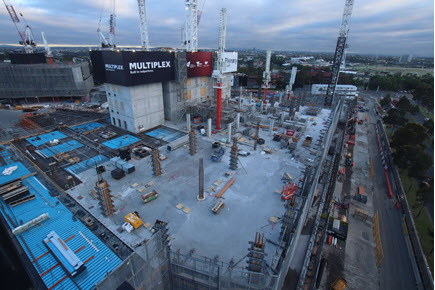
Concrete structure works continued on the site, with around 180 concrete slabs poured to date.
Built replicas of hospital clinical spaces
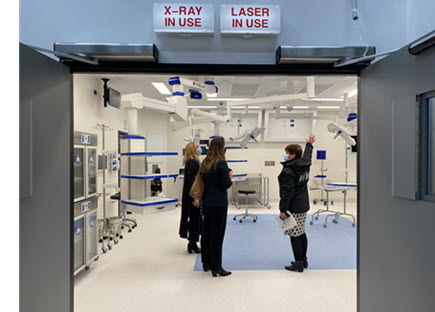 In a warehouse in nearby Sunshine, the New Footscray Hospital Project team and Western Health staff have been given a preview of what’s to come when the new Footscray Hospital opens its doors in 2025.
In a warehouse in nearby Sunshine, the New Footscray Hospital Project team and Western Health staff have been given a preview of what’s to come when the new Footscray Hospital opens its doors in 2025.
The prototype rooms which are close replicas of the key clinical spaces and facilities in the new hospital, are helping staff inform the design and layout.
The design of the rooms was informed by staff feedback from the 'mock-ups' created last year. They include consulting rooms, inpatient bedrooms, emergency department bays and an operating room.
With the prototype rooms fully fitted out, the team and Western Health staff were able to inspect and test equipment, trial the layout and furniture placement, and even experience the replica view from the in-patient rooms across the west and city skyline.
'It’s been great to hear from our staff about the spaces - their feedback is vital and will help inform the next stages of the design process,' Western Health CEO Russell Harrison said.
Install of v-columns on site
One of the highlight milestones achieved this year was the installation of eight massive new concrete v-columns. This marks the first visually complete component at the new Footscray Hospital and frames the front doors to the future emergency department.
These architectural, 13-metre-high concrete supports have been installed in key locations across the site.
Two v-columns installed on Geelong Road will support the 12-storey main hospital tower including the operating theatres. They will be the front door to Footscray’s new emergency department and main vehicle entry.
On Ballarat Road, four v-columns will support the sub-acute building. Two more v-columns are in place in the Village Green, a large open green space which will form the heart of the new hospital once major construction is complete in 2025.
Weighing more than 90 tonnes each, the installation involved many moving parts, including transporting the huge v-column pieces from South Australia, installing the node or starter pieces, and then craning in a section at a time.
The v-columns are the showcase feature in the new hospital’s modern feel. They were designed to complement the site’s vision to be a vibrant community asset and a gateway to the city of Footscray and Melbourne’s western suburbs.
'The v-columns not only provide architectural expression at the main civic entries to the new hospital precinct, but also provide space and flexibility at the ground level.
'The feature columns are integral structural elements that support the primary operating theatres above the Geelong Road entry and act as the front door to the hospital’s new emergency department,' said COX Director, Paul Curry, joint architectural lead for the project.
Partnering to support nurses and research in Melbourne’s west
Plenary Health has partnered with Western Health Foundation to increase opportunities for clinical staff through ICU nursing scholarships and important health research programs.
The partnership is worth more than $300,000 over five years and aligns with Plenary Heath’s delivery of the New Footscray Hospital Project, in partnership with the Victorian Government and Western Health.
It includes more than $100,000 towards post graduate nursing scholarships in key clinical services, research awards for Western Health staff, additional event support and other in-kind activities.
On announcing the partnership, Western Health Chief Executive Adj. Prof Russell Harrison said: 'This partnership demonstrates the strength of Plenary Health’s commitment to the communities Western Health serve – as well as the dedicated Western Health staff that make it all possible.'
Plenary Health New Footscray Hospital Project Chair Kelvyn Lavelle said Plenary Health was honoured to partner with Western Health Foundation and support its important work.
'With ICU being a huge growth area, this partnership will support nurses by providing them with more opportunities through funded scholarships, assist with important health research, and events fundraising support to deliver better health outcomes for the west.'
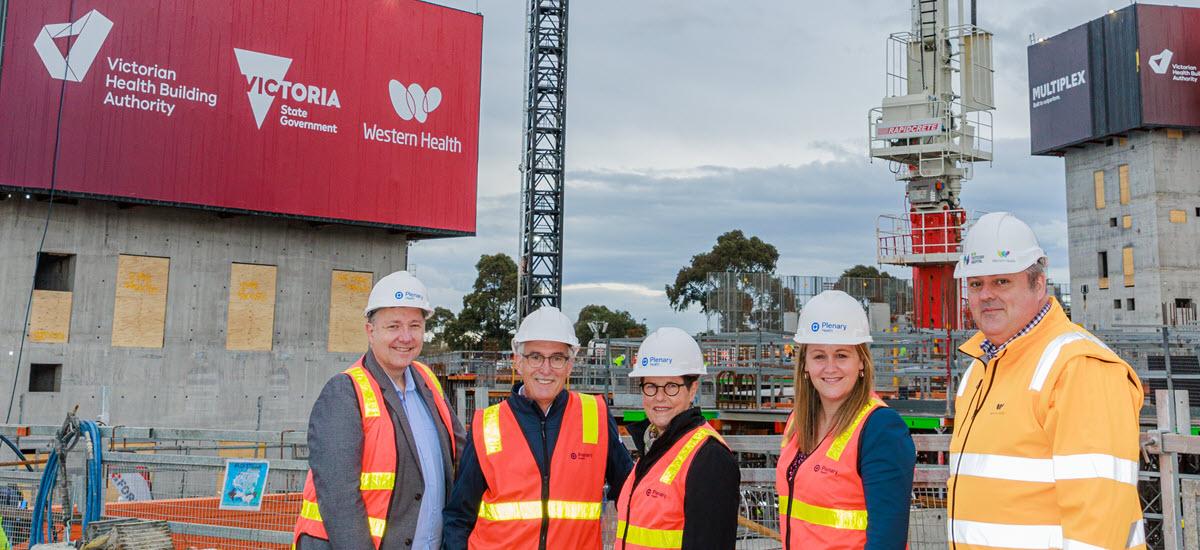
Proto credit: Shannyn Higgins
Pictured left to right: Western Health Executive Director of Nursing and Midwifery Shane Crowe, Plenary Health New Footscray Hospital Project Chair Kelvyn Lavelle, Western Health Chair Robyn Batten, Western Health Foundation Director Julia Harper and Western Health Chief Executive Adj. Prof Russell Harrison.
Interested in jobs and training opportunities on the New Footscray Hospital Project?
 The Connectivity Centre and NFH Jobs Hub continues to support the west through connecting the local community to jobs, apprenticeships and training opportunities both on the new hospital site and at Victoria University Polytechnic.
The Connectivity Centre and NFH Jobs Hub continues to support the west through connecting the local community to jobs, apprenticeships and training opportunities both on the new hospital site and at Victoria University Polytechnic.
Drop-in sessions are held every Tuesday 10.00 am - 12.00 pm to assist students and job seekers interested in working on the new Footscray Hospital.
Job readiness information sessions are also held on a weekly basis.
For more information contact footscray@theconnectivitycentre.com.au or visit 138 Nicholson Street, Footscray.
-
December 2022 Facade installation on the Federal Street car park and Tiernan Street building. Level 2 main hospital building (Inpatient Unit) transfer slab pour. Stormwater works within the site boundary continue (Geelong Road).December 2022Facade installation on the Federal Street car park and Tiernan Street building. Level 2 main hospital building (Inpatient Unit) transfer slab pour. Stormwater works within the site boundary continue (Geelong Road).
-
January 2023 Level 5 of the main hospital building (IPU) to begin. Feature precast installation to sub-acute building. First tower crane removed from site.January 2023Level 5 of the main hospital building (IPU) to begin. Feature precast installation to sub-acute building. First tower crane removed from site.
-
February 2023 Install of facade on main hospital building (IPU) begins. Fit-out of main hospital building (IPU) begins. Second tower crane removed from site.February 2023Install of facade on main hospital building (IPU) begins. Fit-out of main hospital building (IPU) begins. Second tower crane removed from site.
-
March 2023 Power connection complete in preparation for mains connection on main hospital (IPU) and sub-acute buildings. Feature precast installed on majority of main hospital (IPU) and sub-acute buildings.March 2023Power connection complete in preparation for mains connection on main hospital (IPU) and sub-acute buildings. Feature precast installed on majority of main hospital (IPU) and sub-acute buildings.
Meet the faces of Footscray Hospital
 Sally Edmonds-Sims
Sally Edmonds-Sims
Clinical Hospital Coordinator
Sally Edmonds-Sims must have liked what she saw when she came into the world on 4 December 1965, a newborn baby amid the hustle and bustle of Footscray Hospital’s maternity ward. The hospital has remained a constant in her life and one where she has celebrated several major milestones.
'My mother was a nurse at Footscray Hospital. When she worked night shifts, my brother and I would come in with her sometimes and stay in the children’s ward. The other nurses were like our aunties,' says Sally, who now works as a clinical hospital coordinator.
'I started working at the hospital as a clerk when I was 20, moved into more senior administrative roles, was married by the Footscray chaplain in 1990, gave birth to my two daughters at Sunshine Hospital, and started as a graduate nurse here in 2004.'
Sally has seen a lot of changes at Footscray Hospital. She remembers how student nurses lived in quarters at the hospital in the days before nurse education moved to the tertiary sector.
Now a Clinical Hospital Coordinator, Sally is responsible for the operations of the hospital in the after-hours period and on weekends - overseeing patient flow, workforce coverage and providing emergency response for code management.
'What I love most about Western Health is what makes it special and unlike any other hospitals I’ve worked in - its sense of community.
'Footscray Hospital was founded as the people’s hospital and even though Western Health has got bigger over the years, we still look after our own – the people of the west.'
From the archives | Did you know?
 George Thoms, one of Footscray’s pioneer surgeons, was a trailblazer in medicine and sport.
George Thoms, one of Footscray’s pioneer surgeons, was a trailblazer in medicine and sport.
Born in Footscray in 1927 and educated at Williamstown High School, he is the only obstetrician and gynaecologist to have been an Australian test cricketer. He played one Test match for Australia in 1952 in the fifth Test against the West Indies at the Sydney Cricket Ground.
The eminent surgeon also introduced the concept of laser surgery to Australia in the mid-70s.
Picturing Footscray at the Connectivity Centre
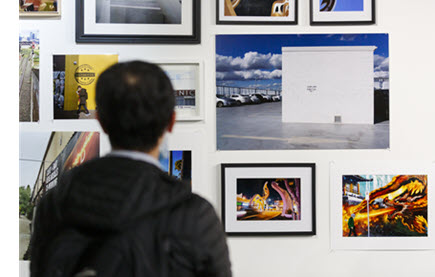 Congratulations to the winners from this year’s Victoria University’s Picturing Footscray photography prize.
Congratulations to the winners from this year’s Victoria University’s Picturing Footscray photography prize.
The competition was held at the Footscray Connectivity Centre from 13 October to 11 November 2022.
The $3,000 first prize was sponsored by Plenary Health and presented to Jessica DuPlessis’s winning work ‘Always Was Always Will Be Land of the Wurundjeri Woi Wurrung and the Bunurong peoples of the Kulin Nation’.
Multiplex were sponsors of the People’s Choice Award ‘Now and then’ by Manon Keown.
Contact us
Contact the project hotline at (03) 9999 1985 or email nfhenquiry@health.vic.gov.au.
- Visit the project website
- Subscribe for project updates
- Follow us on Facebook
Is there anything you’d like to learn about in the next newsletter?
Email your idea to nfhenquiry@health.vic.gov.au.
Translation services

The Translating and Interpreting Service (TIS National) is available (24 hours, 7 days) for callers who speak other languages. Call 131 450.
Vietnamese: Nếu bạn muốn thông tin này được dịch sang tiếng Việt, vui lòng gọi số 131 450
Chinese: 如果您想将此信息翻译成中文,请致电 131 450
Sudanese: Upami anjeun hoyong inpormasi ieu ditarjamahkeun kana basa Sudan, punten nelepon ka 131 450
Arabic: 131450 ذا كنت ترغب في ترجمة هذه المعلومات إلى اللغة العربية ، فيرجى الاتصال على
Spanish: Si desea que esta información se traduzca al español, llame al 131 450
Italian: Se desideri che queste informazioni siano tradotte in italiano, chiama il 131 450
Partnerships
This project is being delivered by the Victorian Health Building Authority in partnership with Western Health, and the Plenary Health consortium.
Acknowledgement of Country
We acknowledge the Wurundjeri People as the Traditional Owners of the lands of the new Footscray Hospital and pay our respects to Elders past, present and emerging.
Subscribe and stay up-to-date
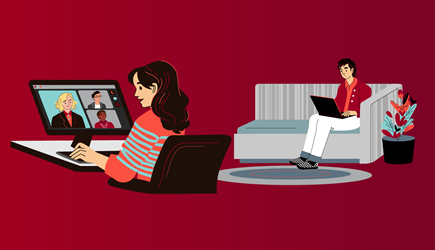
Stay up-to-date on our announcements and projects by signing up to our online newsletters.
Welcome to the latest New Footscray Hospital Project newsletter.
After almost two years of construction on the new Footscray Hospital, we’ve celebrated some significant milestones as the new ‘People’s Hospital’ for the west takes shape.
In this latest newsletter, we share some of the highlights of 2022 including the installation of 13-metre-high concrete v-columns, construction progress across the site and our important work with communities in the west.
With more of the hospital structure now rising above the site hoarding, our project neighbours and community members will be able see the different buildings taking shape.
Construction is now approaching the half-way mark. We appreciate the understanding and support of the community as we work to balance the impacts of construction and the delivery of this important project.
Some minor maintenance work will continue to take place on site over the Christmas period. All major construction work will stop from Thursday 22 December and recommence on Wednesday 11 January 2023.
The New Footscray Hospital Project team wishes all our neighbours and community a wonderful and restful holiday and hope you enjoy reading the latest on your new Footscray Hospital.
You can subscribe to our mailing list to keep up to date on our announcements and project updates.
Jumping up
Your new Footscray Hospital continues to rise, level-by-level. Let’s look at what’s been happening over the past few months:




